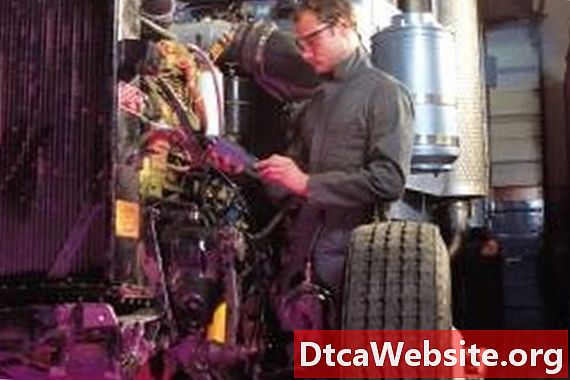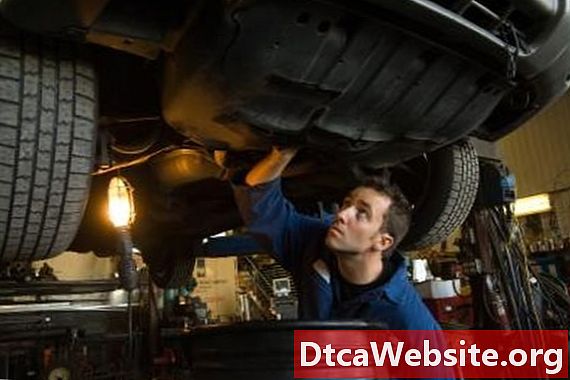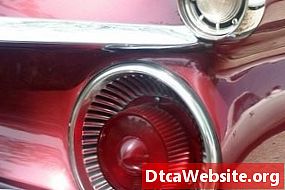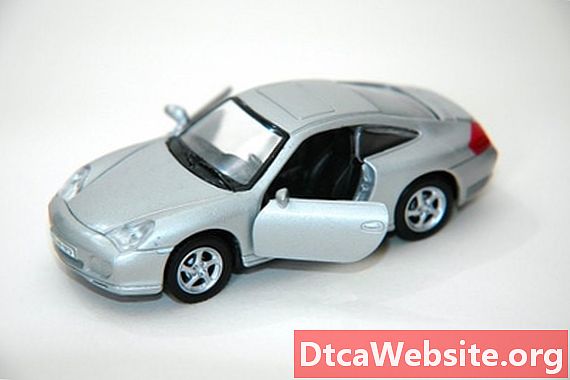
Contenu
- Preparation
- Step 1
- Step 2
- Checking Brakes for Proper Adjustment.
- Step 1
- Step 2
- Step 3
- Adjusting Air Brakes
- Step 1
- Step 2
- Step 3
- Tips
- Warnings
- Items you will need

Having properly adjusted slack adjusters on a heavy vehicle with air brakes is essential to the safe operation of the vehicle. Improperly adjusted slack adjusters on air brakes is a leading reasons for why a commercial heavy truck is removed from service. A slack adjuster is an adjustable lever that attaches to a pushrod and air cylinder assembly on one end and the brake assembly on the other. Adjusting the slack adjuster returns the brake components to their proper tolerance and maintains optimal braking performance. This procedure takes only a few minutes and minimal mechanical skill.
Preparation
Step 1
Start the vehicle and bring the air pressure in the tanks to maximum. Once the air pressure reaches maximum, shut off the engine.
Step 2
Place wheel chocks securely on both sides of one wheel to prevent the vehicle from moving during the procedure.
Push in the air valve on the dashboard of the truck, releasing the brakes to be checked and adjusted.
Checking Brakes for Proper Adjustment.
Step 1
Place a ground cloth or creeper on the ground or floor to keep from getting dirty while underneath the vehicle. Air brakes can have different sized adjustment bolts, so know or find out what size of wrench is needed.
Step 2
Checking the free play on the pushrod. Using the chalk, mark the pushrod at the point where it enters the air cylinder.
Step 3
Pry back on the slack adjuster using a screwdriver or pliers to pull on it and move the slack adjuster back as far as it will go. This will cause the pushrod to pull part way out of the air cylinder.
Measure the distance between the air cylinder and the chalk mark. If the measurement is at or less than 3/4 of an inch, it does not require adjustment. Anything over 3/4 of an inch means the slack adjuster should be adjusted. There is one pushrod for each brake assembly at each end of every axle so check each of them.
Adjusting Air Brakes
Step 1
Locate the adjustment bolt, which is located on the base of the slack adjuster. Often there is a sleeve around the bolt that needs to be pushed inward to access the bolt. By using a box end wrench, the sleeve can be pushed down with the wrench. During this motion, the wrench will slip over the bolt in one motion.
Step 2
Turn the bolt and watch the pushrod. If the pushrod is pulling out of the air cylinder, that is the wrong direction. Turn the bolt the other direction.
Step 3
Turn the bolt until you feel resistance. This is the brake lining contacting the drum. Turn the bolt 1/4 to 1/2 a turn in the opposite direction to create space between the pad and drum. Do this for each brake assembly.
Start the vehicle and apply pressure to the brakes. There should be no more than two inches of travel measured at the pushrod.
Tips
- Keep up with current laws for proper adjustment of air brakes on commercial vehicles.
- If you cannot adjust the slack adjuster within proper specifications, the brake linings are probably worn out. Take the vehicle to a mechanic right away.
Warnings
- Do not adjust automatic slack adjusters. Once set, these adjust by themselves and adjusting them can interfere with them functioning properly.
- Too much slack can make the vehicle hard to stop. Too little slack can cause the linings to rub the drum, causing the brakes to overheat. This can cause a fire or brake fade.
Items you will need
- Screwdriver or pliers
- Combination wrench or box end wrench
- Wheel chocks.
- Creeper or ground cloth.
- Piece of chalk.


